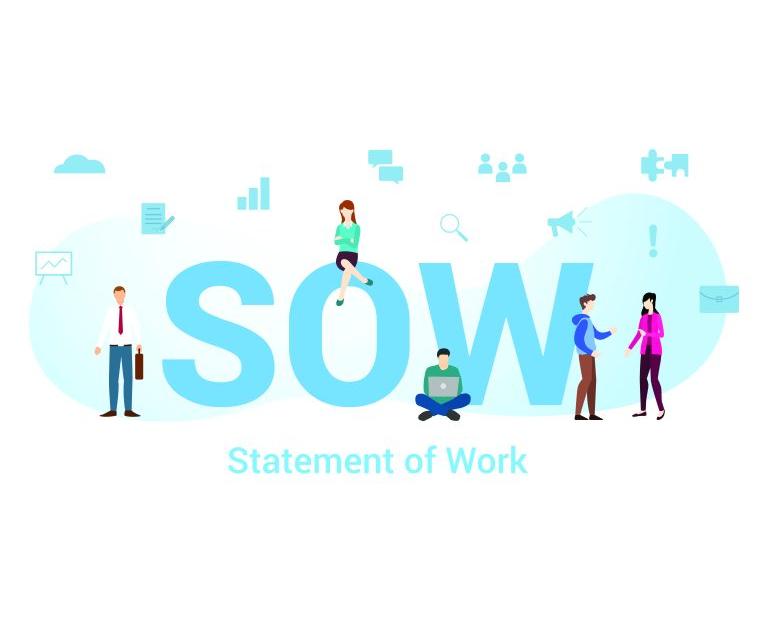Revenue is the lifeblood of every business. And revenue is generated by only one thing: sales. Without a strategy and process to make sales, and an effective implementation of that process, no business can succeed.
When done well, however, sales is a unique combination of both art and science. The science of sales is data. Understanding metrics and KPIs: the revenue impact of decisions that you make. The art of sales is in the practice; how you use that data to connect with prospective clients and build a stronger relationship that leads to business.
Here, we’ll look at two kinds of data that can help you build the ‘science’ of sales for your staffing firm, and how you can use the power of storytelling to drive more revenue.
Data: Looking inward
Rick Carlson is owner and founder of Harvyst Consulting Partners, and Director of TechServe’s Sales & Recruiting Management Program. Carlson is a big believer in using data to drive business decisions, particularly those that lead to revenue. And looking at the industry as a whole, he sees the need.
“According to data from the TechServe Alliance Operating Practices Report (OPR), there are a lot of salespeople who are still performing at lower levels than they should be,” Carlson notes. “Over the last few years, there’s been an increase in the percentage of high performers, but according to OPR data, a significant number of all salespeople are still producing $500,000 or less.”
Carlson advises being transparent with your staff about how the revenue they generate translates to success for the business overall. “You have to get salespeople to understand that they need to drive a certain revenue number before the business starts making money.”
Digging one layer down, it is the individual activity levels of each salesperson that will ultimately lead to their success. Tracking those activity levels, and creating accountability for meeting thresholds, is key. Generally, for salespeople, these activities are:
- Prospecting activities (cold calls, emails, LinkedIn invites, etc)
- Sales meetings
- Job orders
- Candidates submitted
- Candidates interviews
- Offers accepted.
How many of each is the right target for your team? There’s no single answer. To understand the right targets for your staff, there’s more data that can help. Those data points are:
- Percentage of jobs filled
- Number of client visits to get a job order
- Number of candidate submittals to get an interview
- Number of interviews to get a placement
With these metrics, at the individual or the team level, you can calculate the number of meetings a salesperson requires to get one placement. In doing so, you create quantifiable activity targets to which salespeople are accountable.
Data: Looking outward
In addition to the data that can help you understand what’s happening inside your business, you can also use data to help clients understand the value of working with your firm.
“When you know what’s important to a client,” Carlson says, “you can share data that is meaningful to them, and differentiates you from your competitors.”
Your percentage of job orders filled, for example, shows how effectively you fulfill the mandates given to you. If you know what percentage of candidates you submit get interviews, you can show how you save your clients time, since they’re interviewing more hireable candidates. The percentage of interviews that lead to offers, and the percentage of candidates who accept offers, also show how you save time and effort for clients.
One overlooked statistic is production per employee. Do you know how much revenue each of your client’s employees generates for the business? It’s a simple calculation: the company’s gross annual revenue, divided by the number of employees. Divide that number by 235 (the number of working days per year), and you know what each employee produces for the company each day. Working with that figure, you can assign a monetary value to the cost of an open position. This quantifies the value of your days-to-fill rate, and helps to show a client how you save them money as compared to your competitors.
And this is the point where the art of sales begins to blend with the science.
The power of storytelling
Casey Jacox brings his experience in staffing to his work coaching sales teams and speaking about sales performance. Jacox is a sales and executive leadership coach, and the author of Win the Relationship, Not the Deal. One of the techniques he brings to the sales teams he works with is called TED. It stands for ‘Tell me, Explain, Describe,’ and Jacox says that it’s simple but difficult to do. Curiosity is the key.
“Every sale is won or lost in the discovery stage,” Jacox says. “Be curious, be interested. Your internal curiosity will translate into external curiosity, and that’s where you will uncover the information you need to know to develop that client relationship.”
When beginning a sales meeting, for example, Jacox advises asking this simple but effective question:
“Describe what would be an ideal outcome for you in the 30 minutes we have today?”
Probe further to get even more information.
“Tell me more about that? What would be the impact if that were to happen?”
Jacox outlines another example. “When I was in staffing, I wanted the client to know that we did contract-to-hire really well. I could have told them that. Instead, I asked questions. For example, ‘Describe what would be the impact to your project if you weren’t able to have contract-to-hire as an option? Tell me more about that? Explain how it would affect the overall project?’ In the end, the client acknowledged that contract-to-hire was critical. So, all I had to ask is, ‘Should we put that down as a required criteria for any potential vendor?’”
This pattern of questioning takes something you want the client to know about your service and makes it their idea.
These kinds of questioning techniques are particularly important in the staffing industry, because–at the heart of it–there’s very little that objectively differentiates one staffing firm’s service from another.
Differentiation
Staffing firms essentially deliver more or less the same service in the same way. Some are more effective than others, of course, but articulating that differentiation can be difficult. Simply saying that you have ‘better people,’ ‘higher caliber candidates,’ or ‘better service’ isn’t enough; anyone can (and does) say that. So how to differentiate your firm from the rest?
To ensure you and your team are aligned on the message of your offering, slow down to ask yourself these questions below. As someone who has gone through this exercise, you will quickly see if there is a gap in your sales messaging.
- What problems exist?
- What problems do we solve?
- How do we solve those problems differently or better than competition?
- Where is our proof?
Once you have the answers to those questions, you have the basis for making two kinds of differentiation.
●Comparative differentiation
One approach, Jacox says, is to use the power of third-person storytelling. “Ask your clients the question. ‘If someone ask you about our company, explain what would be one or two things that you feel we’ve done differently from our competitors?’” You can then use those points to differentiate your firm in sales meetings, by saying, “What our clients tell us is …”
●Holistic differentiation
There’s a quote that sums up what Jacox calls holistic differentiation. #TheMayaMoment
“I’ve learned that people will forget what you said, people will forget what you did, but people will never forget how you made them feel.”
– Maya Angelou
Great salespeople, Jacox says, focus on building holistic relationships with clients as a point of differentiation. They remember when their clients’ kids have sports games. They remember birthdays, and their favorite coffee. They ask about conferences the clients attended.
Putting it in action
Finally, Jacox recommends a specific method for salespeople to move in a structured manner through the sales process: MEDDICC. The acronym stands for the points below, along with the TED questions that can help to cover them:
- Metrics. “Could you tell me how success will be measured?”
- Economic buyer. There is always a person with the ability to sign a check. “Could you tell me whether anyone else with fiduciary responsibility should be involved in discussions?”
- Decision criteria. “Tell me the one or two things most important to the decision-making process?”
- Decision process. “Could you tell me by what date this needs to be done? Why is that critical? Could you describe the impact if we were to miss the date?”
- Identify pain. “Could you describe for me how this is affecting your work right now? Tell me more about that?”
- Competition. “Could you explain to me who else you’re considering, and what you like about what they’re offering?”
- Champion. You need someone with power and influence, and a vested interest in your success, selling on your behalf when you’re not there. “Could you tell me what you’re going to say when your procurement staff questions this spend? Why are you going to say you’re working with us?”
Conclusion
Sales is both art and science, and great salespeople blend the two in their approach. They use the data they have at their disposal to tell compelling stories that turn prospects into clients.
For leaders, their focus is enabling and empowering their teams to be more productive, and ultimately more profitable. If you’re interested in taking your sales teams to the next level, the TechServe Alliance Sales & Recruiting Management Program can help. Touch base today to find out how.












